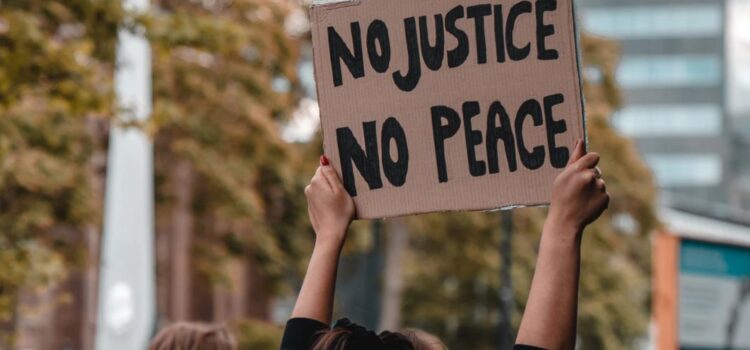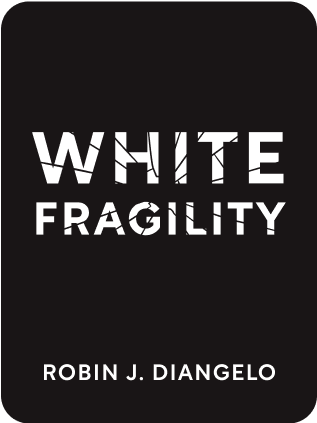

This article is an excerpt from the Shortform summary of "White Fragility" by Robin J. DiAngelo. Shortform has the world's best summaries of books you should be reading.
Like this article? Sign up for a free trial here .
What is White Fragility by Robin DiAngelo? How does the White Fragility author explain the challenges white progressives face when confronting racism?
White Fragility by Robin DiAngelo is about the challenges white people face when trying to talk about racism. Their own discomfort prevents them from talking about their own complicity, especially for white progressives.
Keep reading for some of the key concepts in White Fragility by Robin DiAngelo.
What Is White Fragility by Robin DiAngelo About?
In White Fragility by Robin DiAngelo, the White Fragility author and anti-racist educator Robin DiAngelo explores white fragility—the phenomenon by which white people become angry, defensive, or hostile when confronted with the idea that they are complicit in systemic racism. As a white woman herself, DiAngelo documents the ways in which white Americans are unable to emotionally withstand even minor amounts of racially triggered stress and retreat into a defensive posture when forced to discuss racism.
Institutional Racism
White Fragility by Robin DiAngelo is written for white people who consider themselves to be liberal or progressive on racial matters. Like all white people, white progressives are raised in a society that is institutionally racist. By this, we mean a society in which all key political, economic, social, and cultural institutions are overwhelmingly controlled by white people. This disproportionate share of power is the product of centuries of history during which people of color (especially black people) were systematically enslaved, expropriated, disenfranchised, segregated, and marginalized. As a result, white control of society became the “normal” or “standard” state of affairs.
Being raised in such a society with such a history leaves an indelible mark on white people, even those white progressives who believe they stand in opposition to it. Everyone is socialized by the conditions that surround them—and in the American context, those conditions have always placed white people in a superior position and black and brown people in an inferior position. Simply being white in such a society confers an incalculable advantage.
The Dilemma of White Progressives in White Fragility by Robin DiAngelo
White progressives, however, believe themselves to stand in opposition to racism. Because of their own belief in their moral superiority relative to other white people, however, progressives often become extremely defensive or outraged at the mere suggestion that they, too, benefit from (and, therefore, contribute to) institutional racism. The gap between their professed beliefs and their participation (however unwitting) in a system of oppression becomes an unbearable psychological burden—triggering white fragility.
According to White Fragility by Robin DiAngelo, these reactions stem from a deep misunderstanding of what racism is. White people tend to define racism as a personal character trait. For them, it is something mean and cruel done by mean and cruel people, usually involving explicit and open hostility toward people of color. This picture of racism often involves the invocation of the most outlandish manifestations of white supremacy throughout American history, such as lynchings, slavery, and violence against civil rights protestors. By the logic of this misguided understanding of racism, one cannot be racist if one does not engage in these activities or hold overtly hostile attitudes towards people of color.
But this definition of racism is wrong. Racism is not an individual character trait. The discussion of whether or not an individual white person is or is not “racist” entirely misses the point about how racism actually works.
Racism is inherently about power within society—wielded collectively by those who have it against those who don’t. It is deeply embedded in the social, political, cultural, economic, and legal power structures of the United States. White people, as the group that has always wielded power in America, derive enormous material and psychological advantages from this racist organization of society—whether they believe they do or not.
The Origins of White Fragility
Because white people misunderstand racism and its beneficial impact on their lives, they are unable or unwilling to grapple with their own role in sustaining it when it’s pointed out to them. Thinking about racism as a question of individual morality naturally triggers defensiveness and denial in white people. The logic goes something like, “Racism is something bad done by bad people. I’m not a bad person. Therefore, I can’t be racist.” White fragility is a natural by-product of the universal human desire to think of oneself as good and morally upstanding.
White fragility also stems from white people’s denial of their own racial identity. Many white people inherently view “race” as a characteristic held solely by non-white people. They are unable to accept the idea that whiteness itself is a powerful form of identity, one that profoundly shapes one’s attitudes, assumptions, and actions. Pointing this out to white people results in denial, because they perceive it as an attack on their objectivity and individuality.
They see their thoughts and behavior as stemming from their “neutral” observations about the world, rather than from biases built into the society in which they were raised. For many white people, therefore, “identity politics” (the label they tend to use to deride and dismiss demands by people of color for racial equity) is something that is by definition practiced solely by non-white people—because, to them, “whiteness” is not an identity at all.
All of this speaks to the power and pervasiveness of the idea of whiteness, according to the White Fragility author. Whiteness has been the dominant force within American life for centuries, yet its very existence is denied by the people who most benefit from it.
In this summary, we’ll tackle the phenomenon of white fragility by examining:
- How whiteness derives much of its power from myths white people hold about their own individuality and objectivity, which blinds them to the ways in which they sustain white supremacy;
- How these myths lead white people to deny that white racial identity—and thus, racism itself—even exists;
- How the racial hierarchy owes its origins to the need to justify the systemic oppression of black and brown people beginning in the era of colonization of the Americas;
- How a racist society instills ideas of white superiority in both white people and people of color from the moment of birth and how white people constantly benefit from and reinforce this racial hierarchy;
- How this racist conditioning leads to devastating outcomes for people of color; and
- How white people retreat into white fragility when confronted with their culpability for institutional racism—and how white fragility shuts down honest discussions about white privilege, thereby reinforcing racism.
(Shortform note: Some of the original chapters in White Fragility are only a few pages long. While we usually strive to be faithful to the original book’s structure, we felt that adhering to it in this case would result in too-frequent chapter breaks that would compromise readability and make it more difficult to absorb the ideas of the text. Accordingly, we have consolidated our summary into four thematic sections.)

———End of Preview———
Like what you just read? Read the rest of the world's best summary of Robin J. DiAngelo's "White Fragility" at Shortform .
Here's what you'll find in our full White Fragility summary :
- Why white people become defensive when confronted with the idea of racism
- How today's racial hiearchy began in roots centuries ago
- How we as society can gradually overcome our deep racial divides






